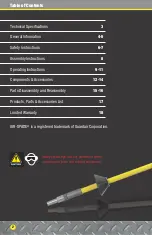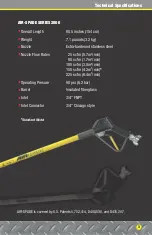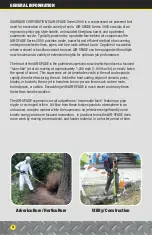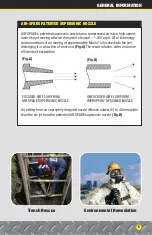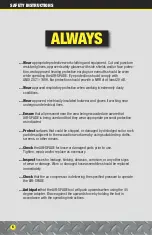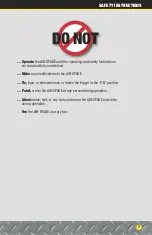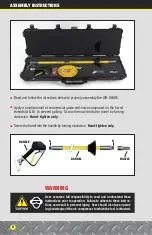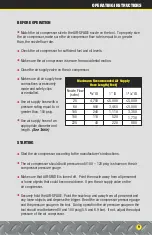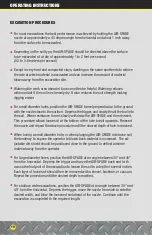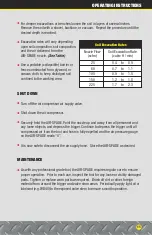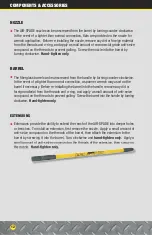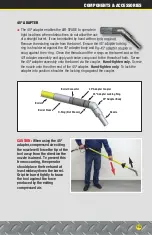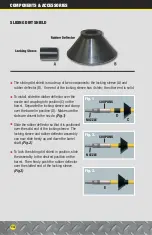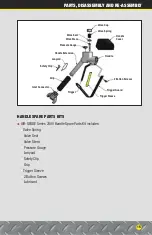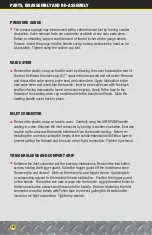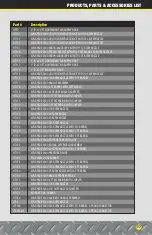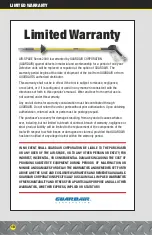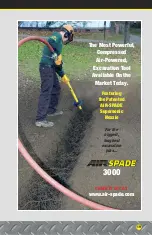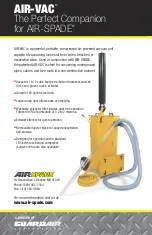
OPERATING INSTRUCTIONS
10
EXCAVATION PROCEDURES
•
For most excavations the best performance is achieved by holding the AIR-SPADE
nozzle at approximately a 45 degree angle from horizontal and about 1 inch away
from the surface to be excavated.
•
Depending on the soil type, the AIR-SPADE should be directed above the surface
to be excavated at a rate of approximately 1 to 2 feet per second
(0.3 to 0.6 meters per second).
•
Except in very hard and compacted clays, dwelling on the same spot tends to reduce
the rate at which material is excavated and can increase the amount of material
blown away from the excavation site.
•
Watering the work area ahead of time can often be helpful. Watering reduces
airborne dust if the soil is extremely dry. It also reduces the soil strength making
digging easier.
•
For small diameter holes, position the AIR-SPADE barrel perpendicular to the ground
with the nozzle close to the surface. Depress the trigger, and slowly thrust the tool into
the soil. When resistance is met, slowly withdraw the AIR-SPADE and then reinsert.
This procedure allows loose soil at the bottom of the hole to exit upwards. Reinsert
the nozzle and repeat the above procedure until the desired depth of hole is reached.
•
When boring a small diameter hole, or when plunging the AIR-SPADE into loose soil,
the tendency to expose the operator to blown back material is increased. The ad-
justable dirt shield should be positioned close to the ground to deflect airborne
material away from the operator.
•
For large diameter holes, position the AIR-SPADE at an angle between 30° and 45°
from the horizontal. Depress the trigger and move the AIR-SPADE back and forth
across the footprint of the excavation to loosen the soil to a depth of several inches.
Each layer of loose soil should then be removed with a shovel, backhoe, or vacuum.
Repeat the procedure until the desired depth is reached.
•
For shallow, wide excavations, position the AIR-SPADE at an angle between 30° and
45° from the horizontal. Depress the trigger, move the nozzle from side to side the
desired width, and blow the loosened soil ahead of the nozzle. Continue until the
excavation is completed to the required length.


